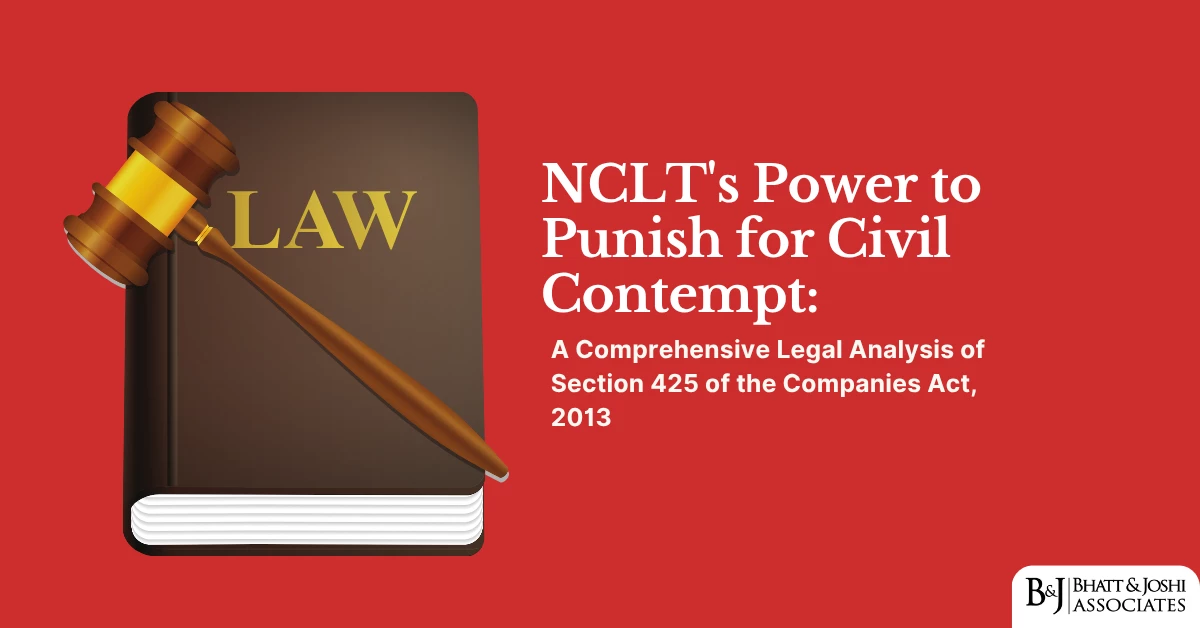Introduction to the Pre-Pack Insolvency for MSMEs
The introduction of the pre-packaged insolvency resolution process (PIRP) for Micro, Small, and Medium Enterprises (MSMEs) through the Insolvency and Bankruptcy Code (Amendment) Ordinance, 2021, later enacted as the Insolvency and Bankruptcy Code (Amendment) Act, 2021, represented a significant evolution in India’s insolvency framework. Designed as a hybrid mechanism combining out-of-court negotiations with formal court approval, PIRP promised a more streamlined, cost-effective resolution for financially distressed MSMEs while preserving business continuity and employment. The mechanism was specifically tailored to address the unique challenges faced by MSMEs, recognizing their economic significance and vulnerability, particularly in the wake of the COVID-19 pandemic. However, as practical implementation has progressed, several legal loopholes and structural weaknesses have emerged, raising questions about the effectiveness of this expedited resolution framework. This article examines the legal framework of Pre-Pack Insolvency for MSMEs, identifies key loopholes and implementation challenges, analyzes emerging judicial interpretations through significant case decisions, and evaluates potential reforms to strengthen this specialized resolution mechanism. Through this analysis, the article aims to provide insights into whether Pre-Pack Insolvency for MSMEs effectively balances the policy objectives of speedy resolution with adequate creditor protection for the MSME sector.
Legislative Framework and Procedural Mechanics
Legislative Framework and Judicial Review of Pre-Pack Insolvency for MSMEs
The framework of Pre-Pack Insolvency for MSMEs was introduced through the insertion of Chapter III-A (Sections 54A to 54P) in the Insolvency and Bankruptcy Code, 2016 (IBC). Section 54A establishes eligibility criteria, limiting this mechanism to entities that qualify as MSMEs under the Micro, Small and Medium Enterprises Development Act, 2006, have defaulted on payments not exceeding Rs. 10 lakh, and have not undergone Pre-Packaged Insolvency Resolution Process (PIRP) or regular Corporate Insolvency Resolution Process (CIRP) in the preceding three years.
The Delhi High Court, in Dwarkadhish Sakhar Karkhana Ltd. v. Ministry of Corporate Affairs & Anr. (W.P.(C) 8058/2021), examined the constitutional validity of these restrictive eligibility conditions, observing:
“The legislature has made a conscious policy choice to limit this expedited mechanism to smaller enterprises with manageable debt profiles, recognizing both their vulnerability and their significance to the economic ecosystem. The eligibility thresholds reflect legitimate classification based on intelligible differentia bearing rational nexus to the legislative objective of providing tailored resolution options to entities with different scales, complexities, and systemic impact.”
The Adjudicating Authority’s role in PIRP is defined under Section 54C, which requires it to either admit or reject an application within 14 days, significantly shorter than the timeline for regular CIRP applications. This accelerated timeline was judicially examined in Vijaykumar Iyer, Resolution Professional of Rainbow Denim Ltd. v. Ind-Swift Laboratories Ltd. (2022) 2 SCC 104, where the Supreme Court emphasized:
“The compressed timelines under Chapter III-A reflect the legislative intent to create a genuinely expedited mechanism rather than merely a truncated version of the regular CIRP. These timelines are not merely directory but mandatory, binding both the corporate debtor and the Adjudicating Authority, given the explicit statutory language and the framework’s underlying purpose of swift resolution.”
Procedural Mechanics and Debtor-in-Possession Model
The PIRP framework adopts a debtor-in-possession model, wherein the existing management continues to control the enterprise during the resolution process, contrasting sharply with the creditor-in-control model of regular CIRP. Section 54H specifically provides that the management shall continue to exercise control, with the Resolution Professional (RP) merely monitoring management decisions rather than assuming control.
In Metalyst Forgings Ltd. v. KKV Naga Prasad (2022 SCC OnLine NCLT Mum 2231), the Mumbai Bench of the National Company Law Tribunal (NCLT) addressed the implications of this model:
“The debtor-in-possession feature represents the most significant departure from the regular CIRP framework. This arrangement preserves management continuity and operational stability but creates a unique monitoring role for the Resolution Professional, who must balance oversight responsibilities with respect for management autonomy. This delicate balance requires judicious interpretation of the RP’s powers under Section 54F to ensure the mechanism neither devolves into management abuse nor reverts to de facto creditor control.”
The PIRP process involves several distinctive phases: (1) pre-filing debt restructuring negotiations; (2) filing of the application with a base resolution plan; (3) public announcement and claims collection; (4) consideration of the base plan or invitation of competing plans; and (5) approval process. The procedural mechanics were examined in Committee of Creditors of Small Business Fittings Pvt. Ltd. v. Registrar of Companies (2022 SCC OnLine NCLAT 456), where the National Company Law Appellate Tribunal (NCLAT) noted:
“The sequential structure of the PIRP process is designed to front-load negotiations and expedite formal proceedings. This hybrid mechanism preserves certain elements of regular CIRP—including creditor approval thresholds, moratorium protections, and judicial oversight—while compressing timeframes and reducing procedural formalities. The framework represents a calibrated attempt to balance stakeholder interests through a more collaborative approach to resolution.”
Legal Loopholes and Implementation Challenges in MSMEs’ Pre-Pack Insolvency
The Narrow Eligibility Window
The restrictive eligibility criteria for accessing PIRP have emerged as a significant limitation. Apart from meeting the MSME classification, applicants must demonstrate default not exceeding Rs. 10 lakh and absence of prior insolvency proceedings within three years. In Ashoka Universal Ltd. v. Union of India (2022 SCC OnLine Bom 8345), the Bombay High Court considered a challenge to these restrictions, observing:
“While the eligibility thresholds serve legitimate screening purposes, preventing abuse by repeatedly defaulting entities, they create an artificially narrow window that may exclude genuinely viable businesses requiring rehabilitation. The Rs. 10 lakh default ceiling, in particular, appears disconnected from commercial realities of even small enterprises, potentially excluding businesses with relatively minor financial distress but strong operational foundations—precisely the candidates that could benefit most from streamlined resolution.”
The court further noted that these restrictions might inadvertently create perverse incentives:
“The current framework could incentivize MSMEs to delay addressing financial distress until reaching the threshold, potentially exacerbating their challenges. A more calibrated approach considering sectoral variations, business vintage, and distress causation might better serve the legislative objective without compromising safeguards against abuse.”
Limited Creditor Participation in Initial Stages
A significant structural weakness in the PIRP framework involves limited creditor participation during the crucial pre-filing negotiation phase. Unlike mature pre-pack regimes in jurisdictions like the UK and US, where extensive creditor engagement typically precedes formal filing, the Indian framework requires approval from only simple majority financial creditors before application, with minimal consultation requirements for operational creditors.
In State Bank of India v. Lohom Wheels Pvt. Ltd. (2023 SCC OnLine NCLT 274), the Ahmedabad Bench of NCLT highlighted this limitation:
“The abbreviated creditor consultation before filing creates information asymmetry that can undermine the process’s integrity. While approval from financial creditors representing merely 51% of debt value might expedite proceedings, it creates potential for circumventing meaningful negotiation with dissenting creditors or significant operational creditors. This structural weakness not only raises fairness concerns but potentially undermines plan viability by excluding relevant stakeholder perspectives during formative stages.”
The NCLAT, in Committee of Creditors of Emerald Auto Pvt. Ltd. v. Strained Ventures Ltd. (2022 SCC OnLine NCLAT 567), further elaborated:
“Effective pre-packs fundamentally rely on good-faith negotiations and information transparency. The current framework’s limited pre-filing engagement requirements potentially compromise both elements, creating risk of suboptimal outcomes despite formal compliance with procedural requirements. The truncated consultation mechanism necessitates particularly vigilant judicial oversight to prevent abuse.”
Verification and Valuation Challenges
The abbreviated timelines for claims verification and enterprise valuation create significant procedural challenges. The RP must verify claims and constitute the Committee of Creditors (CoC) within seven days of public announcement, while simultaneously preparing valuation reports—a compressed schedule compared to the regular CIRP timeline.
In Shriram MSME Pre-Pack Committee v. Samay Polymers Pvt. Ltd. (2023 SCC OnLine NCLT Chen 231), the Chennai Bench of NCLT addressed the implications of these compressed timelines:
“The accelerated schedule for fundamental tasks like claims verification and enterprise valuation creates substantial risk of errors, omissions, or manipulations—particularly in entities with complex creditor profiles or specialized assets requiring sophisticated valuation methodologies. Unlike regular CIRP, where these processes receive appropriate time and scrutiny, the PIRP framework potentially sacrifices accuracy for speed, creating vulnerable points for subsequent litigation that may ultimately delay rather than expedite resolution.”
The court further noted that these challenges are exacerbated by information asymmetry:
“When combined with continued management control and limited initial creditor involvement, the verification and valuation challenges create particular vulnerability to manipulation by unscrupulous promoters. While the framework theoretically addresses this through RP oversight and subsequent CoC approval, the practical effectiveness of these safeguards within compressed timelines remains questionable.”
The “Swiss Challenge” Mechanism and Base Plan Primacy
The PIRP framework incorporates a “Swiss challenge” mechanism where the base resolution plan submitted by the corporate debtor faces potential competition from alternative plans if rejected by the CoC. However, Section 54K creates substantial advantages for the base plan, allowing its proponents to match competitors or receive preferential consideration even with lower financial terms in certain scenarios.
In IDBI Bank v. Divakar Technosys Pvt. Ltd. (2022 SCC OnLine NCLT Del 345), the Delhi Bench of NCLT examined this mechanism:
“The Swiss challenge implementation in the PIRP framework creates structural advantages for promoter-backed plans that potentially undermine value maximization objectives. Unlike true market-testing mechanisms, the current framework’s right-to-match and comparative advantage provisions for base plans potentially discourage competing bidders, knowing their bids might simply establish a floor for promoters to match or marginally exceed.”
The NCLAT, in Committee of Creditors of Kisan Fabs Ltd. v. Suresh Kumar Agarwal (2023 SCC OnLine NCLAT 326), further elaborated:
“While preserving going-concern value through promoter continuity has legitimate policy justification, the current implementation risks prioritizing continuity over maximizing creditor recovery. The mechanism creates potential for manipulation, particularly when combined with the base plan’s information advantages and the compressed timeline for alternative submissions. Judicial authorities must exercise particular vigilance in scrutinizing whether CoC decisions within this framework genuinely reflect commercial wisdom rather than procedural constraints.”
Operational Creditor Treatment
The treatment of operational creditors under the PIRP framework presents another significant concern. While Section 54K technically requires minimum liquidation value protection for operational creditors, their limited participation rights and the framework’s expedited nature potentially exacerbate their vulnerable position compared to even regular CIRP.
In Phoenix ARC Pvt. Ltd. v. Precision Fasteners Ltd. (2022 SCC OnLine NCLT Mum 1876), the Mumbai Bench of NCLT addressed this concern:
“Operational creditors—particularly small vendors and service providers often critical to MSME operations—face heightened vulnerability under PIRP’s expedited framework. With limited consultation rights before filing, minimal representation during proceedings, and expedited timelines that may impair claims verification, these stakeholders risk systematic disadvantage despite theoretically enjoying liquidation value protection. This structural weakness could paradoxically undermine business continuity objectives if essential operational relationships are damaged through the process.”
The Gujarat High Court, in Maahi Plast Industries v. Union of India (2022 SCC OnLine Guj 1254), further observed:
“The abbreviated timelines and procedural simplifications—while potentially benefiting MSMEs as debtors—may systematically disadvantage MSMEs as operational creditors to other MSMEs. This creates a potential policy contradiction, where mechanisms designed to support the MSME ecosystem might actually propagate financial distress through the supply chain if operational creditor interests receive inadequate protection.”
Judicial Interpretations and Emerging Jurisprudence
Suspension of Management Powers
A critical area of judicial interpretation involves the tension between management continuity and creditor protection. Section 54H theoretically preserves management control, but Section 54J empowers the NCLT to vest management with the RP upon CoC request if the affairs have been conducted fraudulently or grossly mismanaged.
In the landmark decision Mahavir Polypack Pvt. Ltd. v. State Bank of India (2022 SCC OnLine NCLT 1742), the NCLT Chennai interpreted these provisions:
“The management continuity under PIRP is neither absolute nor unconditional. It represents a presumption that may be rebutted through evidence of conduct inimical to creditor interests or statutory objectives. Unlike regular CIRP, where management displacement is automatic, PIRP requires specific evidence of mismanagement or fraud—creating a balanced approach that preserves continuity where beneficial while enabling intervention where necessary.”
The NCLAT, in Committee of Creditors of Veena Industries Ltd. v. Sunil Kumar Agarwal (2023 SCC OnLine NCLAT 156), further refined this interpretation:
“The threshold for management displacement under Section 54J requires demonstration of either fraudulent conduct or gross mismanagement—standards deliberately set higher than mere business misjudgment or ordinary negligence. This heightened standard reflects the legislative intent to preserve management continuity except in cases of demonstrable misconduct, recognizing the potential value of management knowledge and relationships in MSME contexts. Adjudicating Authorities must exercise this power judiciously, balancing the risk of continued mismanagement against the potential disruption of management displacement.”
Base Plan Modifications and Challenges
Another significant area of judicial interpretation concerns the permissible scope of modifications to the base resolution plan. Section 54K provides for CoC consideration of the base plan, potential modifications, and the introduction of alternative plans if the base plan is rejected.
In Punjab National Bank v. Siddhi Vinayak Knots & Prints Pvt. Ltd. (2022 SCC OnLine NCLT Ahd 421), the Ahmedabad Bench of NCLT addressed the scope of permissible modifications:
“The modification provisions must be interpreted purposively, allowing meaningful CoC input while respecting the pre-negotiated nature of the base plan. While minor adjustments addressing creditor concerns fall within permissible modification, fundamental alterations to core commercial terms would effectively constitute rejection rather than modification. This distinction requires case-specific evaluation of whether proposed changes preserve the plan’s essential character or fundamentally transform it.”
The NCLAT, in Arka Fincap Ltd. v. Committee of Creditors of Eastern Bearings Pvt. Ltd. (2023 SCC OnLine NCLAT 245), elaborated on the Swiss challenge mechanism:
“The Swiss challenge process represents a legislative compromise between management continuity objectives and value maximization imperatives. While the framework creates procedural advantages for the base plan, these advantages do not exempt it from meeting minimum commercial viability standards. The CoC retains genuine authority to reject fundamentally inadequate base plans, triggering the market-testing process, despite the framework’s structural preference for the base plan.”
Interplay with Section 29A Disqualifications
The application of Section 29A disqualifications—which prevent certain categories of persons from submitting resolution plans—has emerged as a key area of judicial interpretation in the context of Pre-Pack Insolvency for MSMEs. Section 54A(2)(e) explicitly disqualifies entities covered under Section 29A from initiating PIRP, while also providing targeted relaxations that account for the distinct operational structure and financial vulnerabilities of MSMEs.
In Union Bank of India v. Precision Electronics Ltd. (2022 SCC OnLine NCLT Del 542), the Delhi Bench of NCLT addressed this interplay:
“The application of Section 29A in the PIRP context requires balanced interpretation recognizing both safeguard objectives and MSME realities. While core integrity provisions preventing unscrupulous promoters from regaining control remain applicable, the relaxations regarding NPA classifications and personal guarantees reflect recognition of MSME financing realities. This calibrated approach prevents the reform-minded framework from becoming a vehicle for circumventing fundamental integrity safeguards.”
The Supreme Court, in Manish Kumar v. Union of India (2021) 5 SCC 1, while examining IBC amendments generally, provided guidance relevant to the interpretation of MSMEs Pre-Pack Insolvency provisions.
“Legislative policy recognizing the distinctive characteristics of MSMEs, including their frequently promoter-centric operations and limited separation between ownership and management, justifies calibrated application of certain restrictions. This does not, however, create blanket exemption from integrity requirements designed to prevent abuse of the insolvency process. Adjudicating authorities must distinguish between genuine entrepreneurial distress and deliberate malfeasance, applying relaxations only in appropriate cases.”
Judicial Review of CoC Decisions
The scope of judicial review over CoC decisions in the PIRP context has emerged as another significant interpretive area. While the IBC generally limits judicial interference with commercial wisdom, the PIRP’s unique structure and potential conflicts create distinctive review questions.
In ICICI Bank v. Lakshmi Energy and Foods Ltd. (2023 SCC OnLine NCLT Chd 187), the Chandigarh Bench of NCLT addressed this issue:
“The scope of judicial review over CoC decisions within PIRP maintains the general deference to commercial wisdom established in regular CIRP jurisprudence. However, the unique structural features of PIRP—including limited initial creditor involvement, management continuity, and base plan advantages—necessitate heightened vigilance for procedural fairness and compliance with statutory objectives. This does not authorize substitution of commercial judgment but requires careful scrutiny of whether decisions genuinely reflect unfettered creditor assessment.”
The NCLAT, in Indusind Bank v. Committee of Creditors of Maruti Cotex Ltd. (2022 SCC OnLine NCLAT 478), further elaborated:
“The CoC’s commercial wisdom in PIRP contexts deserves judicial deference comparable to regular CIRP, recognizing creditors’ expertise in assessing viability and value. However, the abbreviated procedures and potential information asymmetries create particular importance for ensuring procedural regularity and adequate information availability. Appellate authorities should examine whether CoC decisions were based on sufficient information and deliberation, while respecting the ultimate commercial judgment where procedural safeguards were observed.”
Comparative Perspectives and Reform Pathways
Lessons from Mature Pre-Pack Regimes
Mature pre-pack regimes in jurisdictions like the United Kingdom and United States provide valuable comparative insights for addressing PIRP loopholes. The UK system emphasizes extensive pre-filing marketing and independent evaluation, while the US Chapter 11 process incorporates robust disclosure requirements and market testing.
In Committee of Creditors of Kalyan Toll Infrastructure Ltd. v. Ajay Joshi (2023 SCC OnLine NCLAT 124), the NCLAT referenced international practices:
“International pre-pack regimes offer instructive contrasts to India’s framework, particularly regarding creditor engagement and market testing. The UK approach mandates independent evaluation and typically involves extensive pre-filing marketing, while US procedures emphasize robust disclosure and post-filing market testing. These mechanisms address precisely the information asymmetry and potential value leakage concerns that have emerged in India’s PIRP implementation.”
The Delhi High Court, in MSME Association v. Union of India (2022 SCC OnLine Del 3246), similarly noted:
“While adapting international practices to domestic conditions requires careful calibration, certain fundamental pre-pack elements appear essential regardless of jurisdiction: meaningful creditor engagement before filing, genuine market testing of proposed solutions, and robust safeguards against insider advantages. India’s framework incorporated some but not all of these essential elements, creating structural vulnerabilities that international experience suggests may undermine long-term effectiveness.”
Potential Legislative Amendments
Several potential legislative amendments could address identified loopholes while preserving the PIRP’s core benefits. These include expanding eligibility criteria, enhancing pre-filing creditor consultation requirements, strengthening the Swiss challenge mechanism, and improving operational creditor protections.
In In re: Ministry of Corporate Affairs Notification S.O. 1543(E) dated April 9, 2021 (2022 SCC OnLine NCLAT 365), the NCLAT offered recommendations:
“Legislative refinements to address emerging implementation challenges might include: (1) graduated eligibility thresholds based on sectoral and regional considerations rather than uniform criteria; (2) enhanced pre-filing disclosure and consultation requirements; (3) strengthened market-testing mechanisms with reduced base plan advantages; and (4) extended minimal operational creditor consultation requirements. These targeted amendments could address key vulnerabilities while preserving the framework’s fundamental objectives.”
The Insolvency Law Committee, in its February 2023 report, similarly recommended:
“The PIRP framework requires calibrated amendments addressing implementation feedback while maintaining its core expedited structure. Potential reforms include revisiting the default threshold, enhancing pre-filing information transparency requirements, strengthening valuation safeguards, refining the Swiss challenge mechanism, and clarifying management oversight standards. These targeted interventions would address observed vulnerabilities without requiring fundamental redesign.”
Enhancing Monitoring Mechanisms
Strengthened monitoring mechanisms could mitigate concerns regarding management continuity without sacrificing the framework’s efficiency objectives. Enhanced RP powers, more structured creditor oversight committees, and specialized PIRP monitoring tools represent potential solutions.
In Liberty House Group Pte. Ltd. v. Committee of Creditors of Adhunik Metaliks Ltd. (2022 SCC OnLine NCLAT 134), the NCLAT addressed this approach:
“Effective monitoring represents the essential counterbalance to management continuity in successful pre-pack frameworks. Enhanced RP monitoring powers, structured through clear protocols rather than case-by-case determination, could establish appropriate oversight without necessitating management displacement. Such mechanisms might include mandatory consultation requirements, specified transaction approval thresholds, and regularized reporting obligations—creating predictable parameters that balance continuity with protection.”
The Bombay High Court, in Kotak Mahindra Bank v. Union of India (2022 SCC OnLine Bom 9134), further elaborated:
“The current binary choice between complete management continuity and displacement could be supplemented with intermediate monitoring mechanisms, such as creditor oversight committees with specified consultation rights, enhanced information access protocols, and structured decision escalation frameworks. Such mechanisms would create more nuanced oversight calibrated to specific case requirements rather than the current all-or-nothing approach.”
Conclusion: Unlocking the Potential of Pre-Pack Insolvency for MSMEs
The framework of pre-packaged insolvency for MSMEs represents a significant innovation in India’s insolvency ecosystem, designed to address the unique challenges faced by smaller enterprises through an expedited, less disruptive resolution process. However, as this analysis demonstrates, several legal loopholes and structural weaknesses have emerged during implementation, creating potential for manipulation, suboptimal outcomes, and stakeholder prejudice despite formal compliance with statutory requirements.
The key vulnerabilities identified include: overly restrictive eligibility criteria that create an artificially narrow access window; limited creditor participation in crucial pre-filing stages; compressed timelines for fundFamental processes like claims verification and valuation; structural advantages for promoter-backed plans through the modified Swiss challenge mechanism; and potential prejudice to operational creditors through abbreviated procedures. These concerns are not merely theoretical but have manifested in emerging case law as courts grapple with balancing the framework’s efficiency objectives with adequate stakeholder protections.
Judicial interpretations have begun addressing these challenges through purposive construction of provisions regarding management powers, plan modifications, disqualification applications, and review standards. However, more comprehensive legislative interventions may be necessary to address fundamental structural weaknesses while preserving the framework’s core benefits. Potential reforms drawing from international experience and implementation feedback could include expanded eligibility criteria, enhanced pre-filing requirements, strengthened market-testing mechanisms, improved operational creditor protections, and more nuanced monitoring protocols.
Despite these challenges, the Pre-Pack Insolvency for MSMEs framework represents an important step in India’s insolvency evolution, recognizing the need for tailored approaches to different business segments rather than one-size-fits-all solutions. With appropriate refinements addressing identified loopholes, this mechanism has the potential to fulfill its intended role in providing expedited, cost-effective resolution for MSMEs while maintaining necessary stakeholder protections and market discipline. The continued evolution of this framework through judicial interpretation and potential legislative amendments will significantly impact whether Pre-Pack Insolvency for MSMEs fulfills its promise as a valuable addition to India’s insolvency toolkit rather than merely creating an alternative route vulnerable to manipulation and abuse.














